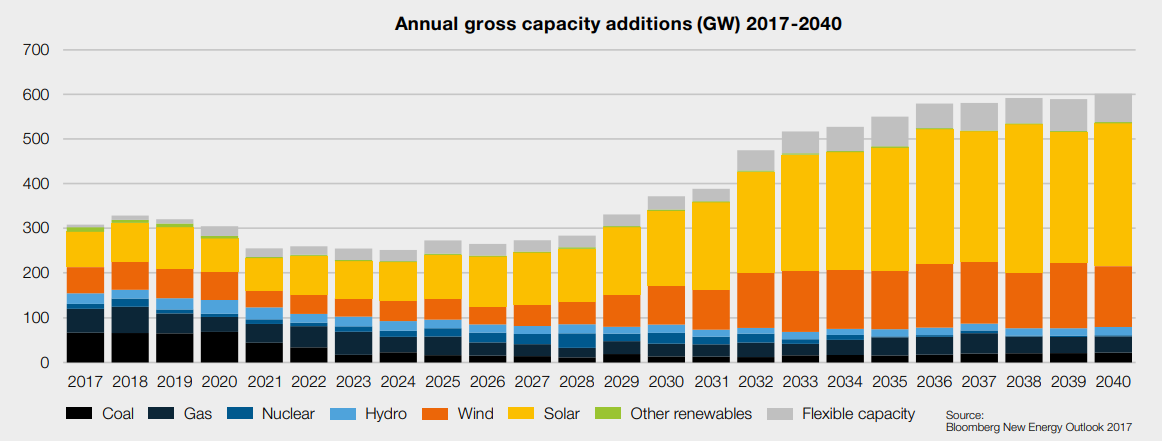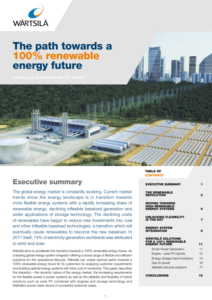Wartsila launched a white paper focusing on accelerating the transition towards a 100% renewable energy future. The market trends reflect that the shipping industry is currently leaning towards more flexible systems, with a rapidly increasing share of renewable energy, declining inflexible baseload generation and wider applications of storage technology.
The paper presents the transition, meaning the dynamic nature of the energy market, the increasing requirements for the flexible assets in power systems as well as the reliability and flexibility of hybrid solutions such as solar PV combined with engines and storage technology and Wärtsilä’s proven track record of successful customer cases.
Recently, it becomes more and more obvious that there’s a steady decline in the price of renewable energy in the global power system.

Wind and solar cumulative installed capacity is expected to increase from 14% in 2017 to 48% in 2040, enabled by engines and storage.
In addition, when the new build renewables become cheaper than running an existing gas or coal plant, the loaded costs of renewables will also become cheaper, in comparison to the marginal costs of thermal generation.
Thus, the above change will result to retirements of thermal plants from the system and speed up the switch; These tipping points will conclude to renewables achieving grid parity – where they generate power at an LCOE less than or equal to price of purchasing power from the electricity grid, without subsidies or government support.
Wartsila highlights that on a levelised cost of energy basis, by 2040, solar will become another 60% cheaper and wind will become another 40% cheaper.
Furthermore, inflexible capacity is being shut down and a prime example of this in Australia, which is in the process of steady decarbonisation.
In the meantime, the paper notes that global attempts on achieving a 100% renewable energy future is being made at a rapid pace.
Therefore, the paper added that
This phased transformation, from the global power system operating at 0-20% renewables to a stage where 80-100% renewable energy systems will exist, requires major changes in infrastructure, investments and innovation in technology.
The transition also is in need of increased flexibility as it ensures that power systems can adapt to fluctuations in both demand and supply in a cost effective manner.
Concluding, the transition to a 100% renewable energy future is well underway, with increasing renewable integration, decreasing cost competitiveness of inflexible power generation and remarkable changes in the energy markets across the globe. To work towards a cleaner, more sustainable and energy efficient future, it is imperative for energy providers to adapt their strategies.
To explore more, click herebelow





























































